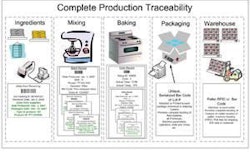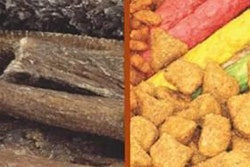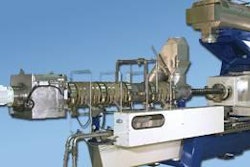According to the latest data from Mintel , sales of petfood and supplies continue to rise in spite of the recession. Sales will hit US$27.5 billion in 2009, an increase of 2.9% over 2008.
Over the past five years sales have increased 19%, or 3% after adjusting for inflation, and are expected to grow at just less than 3% per annum through 2014, predicts Mintel. Research conducted by Del Monte Foods, reported in Ad Age (May 25 2009), found that consumers were more likely to sacrifice on their own food before cutting back on petfood.
Dog food dollar sales continue to rise slowly as dog owners seek out what they perceive as superior nutrition and quality ingredients. Mintel estimates an increase of 3% in 2009 to US$9.8 billion. Over the past five years, dog food sales have increased 19%.
Sales of cat food have risen slowly but steadily over the past four years. Segment sales will reach US$6.6 billion in 2009, an increase of 2.4%. Over the last five years, sales have increased 12%.
Sales of food for pets other than cats and dogs has grown less consistently and more slowly overall than dog and cat food. Mintel estimates that sales will increase 1.3% in 2009. Over the last five years sales have increased 5%.
Emphasizing value
Despite the struggling economy, sales of petfood have generally held strong, as most pet owners remain committed to feeding and caring for their pets - often looked at as family members. The continued slow but steady growth of category dollar sales has been influenced by a variety of factors, according to data from Mintel and Packaged Facts :
Specialization.
Pet owners remain willing to pay a premium for specialized
petfoods that promise a variety of benefits for pets and,
increasingly, appeal to the broader food and nutrition
attitudes of the owner.
Inflation. The food commodity inflation that has pushed up
prices all over the supermarket in recent years has also
impacted the petfood aisle.
Recall after effects. The recall of petfoods in the spring of 2007 did little to slow the growth of the industry and, if anything, has motivated more pet owners to seek out what they perceive to be safer alternatives, sometimes at a higher price.
While some pet owners have gravitated to new premium brands promising superior nutrition for their animals, others have been forced to, or chosen to, economize. According to Mintel's recent consumer research, a quarter of pet owners claim to have switched to less expensive petfood due to the economy. A chief beneficiary of this down-trading has been retailers' private labels.
Store brands have made market share gains in most segments of petfood and supplies. Notably private label has made solid gains in dog and cat food, which can be a significant annual expenditure, particularly in households with multiple animals.
Dog and cat food grows on nature and science
Dog food sales have experienced solid growth in the past two years, as dog owners have displayed increased consciousness of ingredients and a greater interest in foods that promise a natural, healthy balance. Brands such as Goodlife Recipe from Mars Inc. and Beneful from Purina have gained share. In addition, brands that cite scientific credentials and research, such as Iams and Purina ONE, have remained strong competitors.
Dollar sales of cat food have continued to rise slowly over the past four years as manufacturers of mainstream brands have offered specialized meals for finicky cats. In many cases these premium priced foods have also featured natural and specific ingredients such as wild salmon and garden greens.
The next niche
Beyond the mainstream dog and cat food market, ample opportunities exist for smaller, more narrowly focused competitors in pet specialty stores, which offer a broader selection of superpremium brands with highly specialized varieties that target pet life-stages, lifestyles, health issues, ingredient preferences, even specific breeds, says Mintel. Many retail channels are starting to compete as well. A broad array of retailers carry petfood and supplies. Supermarkets, mass merchants, and pet specialty stores account for most sales, but other channels registering sales include warehouse clubs, dollar stores, natural food stores, convenience stores, drug stores, farm supply stores, home centers and several others.
According to Mintel's GNPD, petfood new product activity has been heaviest over the last few years in the area of dog snacks and treats, which have accounted for roughly half of all products launched. New snacks have come from both leading petfood companies and literally hundreds of other competitors, many of them concentrating on all-natural products. Most new pet snacks and treats also embody the emphasis on highly specific pet health and wellness benefits that has overtaken the entire petfood industry. Functional food claims include such benefits as dental care, immune system support, digestive health, skin health and joint health. Natural ingredients are common, as are antioxidants, omega-3 fatty acids, fiber and vitamins.
The highest growth pet market segments - natural and organic - overlap with retailer trends. Petco recently announced an agreement with TerraCycle to test a petfood bag recycling program in Petco locations. Walmart has their O-Organics line and many grocery stores now feature pet products in their organic food aisles. The natural/organic trend dovetails with new consumer sense of temperance, value and social responsibility. Smart manufacturers will position pets as a primary connection to the earth and all things natural with their ingredients, marketing and packaging!
Figure 1: Alternative petfood segment performance
Figure 2: US sales of natural and organic pet products
Figure 3: Top 20 marketing claims
















